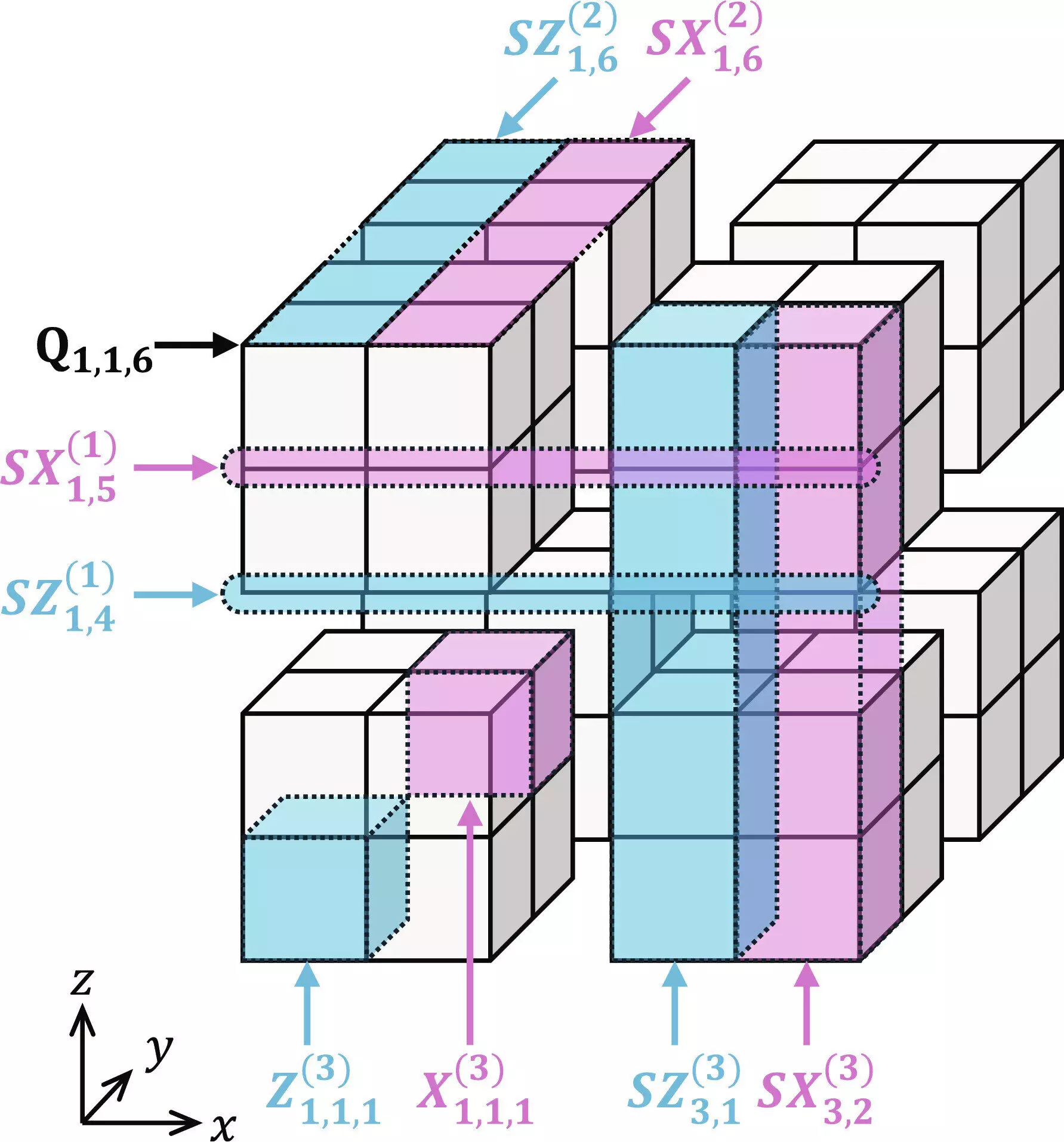Quantum error correction is a crucial aspect of developing fault-tolerant quantum computers. In a recent publication in Science Advances, Hayato Goto introduced a groundbreaking quantum error correction approach using “many-hypercube codes.” This innovative method presents a novel way to achieve highly efficient error corrections, paving the way for the advancement of quantum computing.
Traditionally, quantum error correction involves encoding a single logical qubit onto multiple entangled physical qubits, followed by decoding to recover the logical qubit. However, scalability issues arise with this method, as the number of required physical qubits increases significantly, leading to resource overheads. To address this challenge, researchers have explored high-rate quantum codes like quantum low-density parity-check codes. While these codes offer some improvements, they require sequential setup of logical gates, impacting efficiency.
Hayato Goto’s “many-hypercube codes” introduce a fresh perspective on quantum error correction. By utilizing a high-rate concatenated quantum code approach, Goto visualizes logical qubits as forming a mathematical hypercube structure. This innovative design distinguishes itself from traditional complex quantum codes, offering a simpler yet effective solution.
A key component of Goto’s approach is the design of dedicated decoders capable of interpreting results from physical qubits. The level-by-level minimum distance decoding technique enhances performance significantly. Notably, this method allows for parallel implementation of logical gates, resembling the parallel processing used in classical computers. Goto refers to this as “high-performance fault tolerant computing,” drawing a parallel to high-performance computing in classical systems.
The implementation of many-hypercube codes has yielded impressive results. These codes boast an encoding rate of up to 30%, which Goto claims is among the highest in fault-tolerant quantum computing codes worldwide. Even with this high rate, the performance of the codes remains comparable to conventional low-rate codes, showcasing the efficacy of this novel approach.
The introduction of many-hypercube codes represents a significant advancement in quantum error correction. By combining mathematical elegance with practical efficiency, Hayato Goto has laid the foundation for future developments in fault-tolerant quantum computing. The potential of this approach to revolutionize the field of quantum computing is promising, offering new avenues for researchers to explore in the quest for scalable and efficient quantum systems.


Leave a Reply